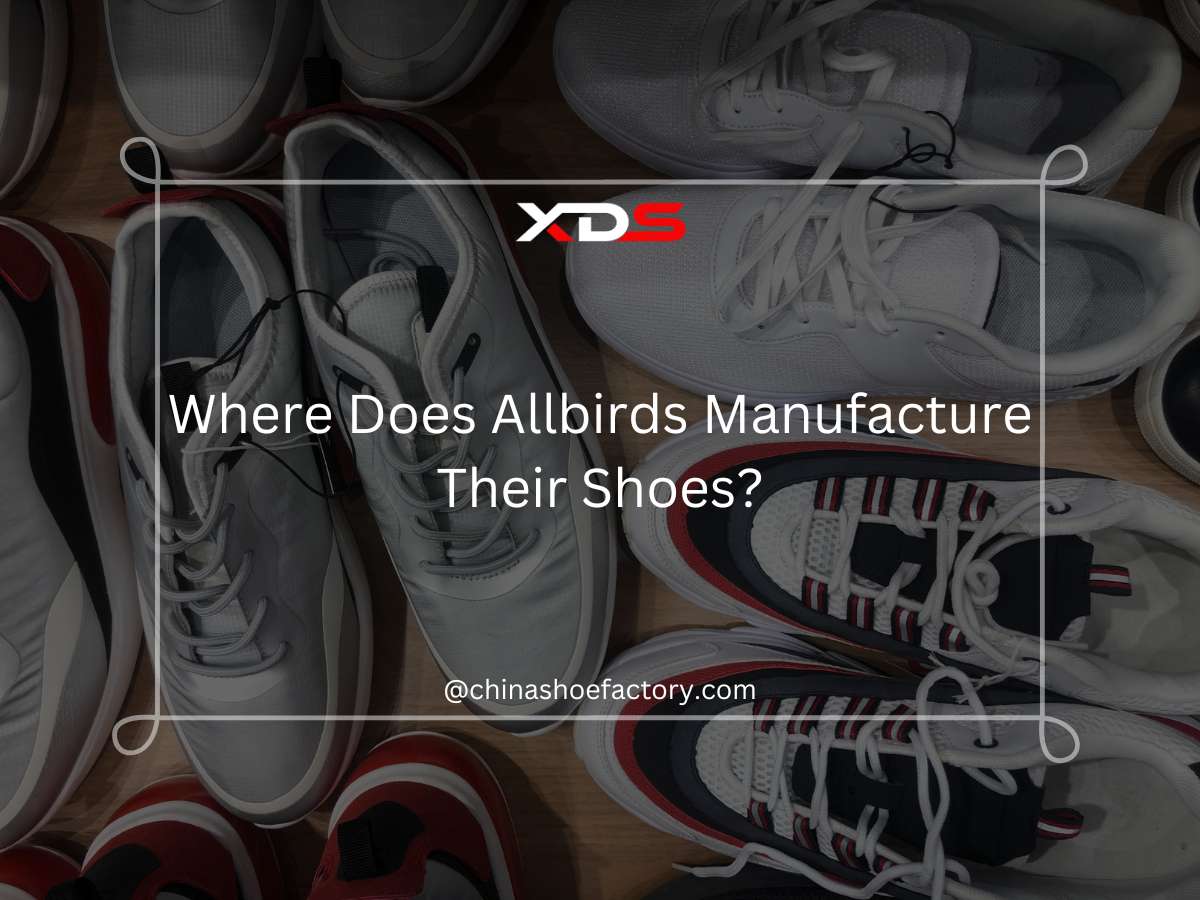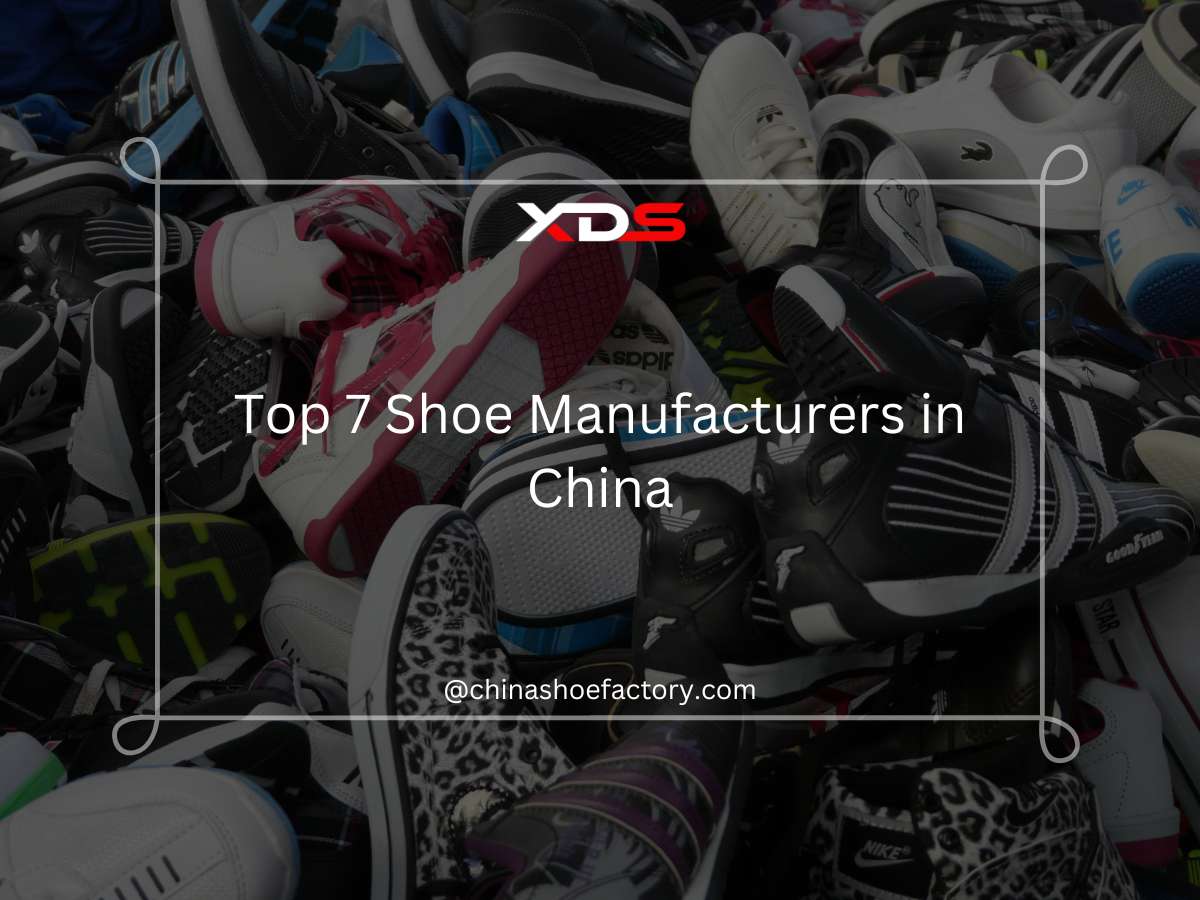Top 10 Footwear Distribution Channels

Author: Andy Hong | Founder at XDS
Hi, I'm Andy Hong, here to share my expertise in footwear manufacturing with you.
Top 10 Footwear Distribution Channels
Table of Contents
What’s the secret to successfully getting your footwear to the right customers? Distribution channels play a crucial role in the success of your footwear business, impacting everything from brand visibility to sales growth.
As a supply chain footwear expert, I understand the challenges business owners face when navigating distribution strategies. I can help you provide clear actionable advice to help you optimize your approach.
Here’s a quick look of 2 of the best footwear distribution channels:
- Retail Stores
- E-Commerce Platforms
In this guide, we’ll dive into the top 10 footwear distribution channels, covering how each works, its advantages, and tips for making them effective.
Let’s get started!
1. Quick Comparison Chart
Finding the right distribution channel for your footwear business is key to reaching the right audience and maximizing sales. Below is a quick comparison to give you a glimpse before diving deeper into each channel:
| Channel | Target Audience | Key Advantages |
| Retail Stores | Local customers and walk-ins | Hands-on product experience, immediate purchase options |
| E-Commerce Platforms | Online shoppers globally | Global reach, 24/7 convenience, broader selection |
| Wholesale Distributors | Retailers and resellers | Bulk purchasing, market expansion, efficient supply chain |
| Direct-to-Consumer | Brand-loyal customers | Higher profit margins, personalized service, exclusive offers |
| Third-Party Marketplaces | Budget-conscious and niche shoppers | Wide reach, built-in traffic, flexible setup |
| Specialty Stores | Niche customers (e.g., athletes) | Tailored collections, niche expertise, personalized service |
| Pop-Up Shops | Seasonal/event-based audiences | Low overhead costs, market testing, unique shopping experiences |
| Discount Retailers | Price-conscious customers | Affordable pricing, quick sales turnaround, diverse options |
| B2B Sales Channels | Corporate buyers and wholesalers | Long-term partnerships, streamlined distribution, low marketing costs |
| Subscription Services | Recurring buyers | Predictable demand, customer loyalty, regular brand engagement |
2. Retail Stores
Retail stores serve as a key channel for footwear sales, offering a place where customers can try on and buy shoes in person. They provide a hands-on experience, allowing buyers to evaluate quality, comfort, and style before making a decision.
Examples
- Department Stores: Retail giants like Macy’s feature a variety of footwear brands, making them a convenient destination for customers looking for diverse options in one place.
- Flagship Stores: Brands like Nike and Adidas use flagship stores to highlight their latest designs and create an immersive shopping experience that reflects their identity.
- Outlet Stores: These stores specialize in discounted footwear, allowing customers to purchase high-quality products at lower prices, often attracting budget-conscious buyers.
- Mall Retailers: Stores in malls provide accessibility and convenience, often benefiting from high foot traffic and appealing to a broad range of shoppers.
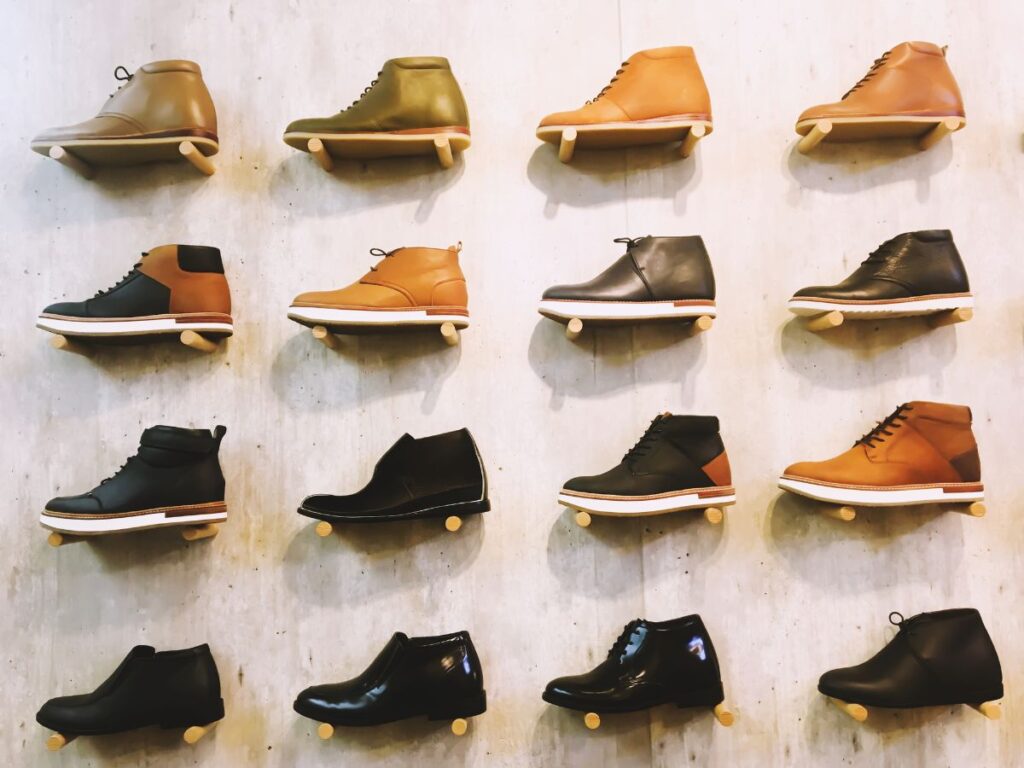
Advantages
- Physical Interaction: Retail stores allow customers to touch, feel, and try products, helping them make more informed and confident purchase decisions.
- Immediate Purchase: Buyers can walk out with their chosen footwear without waiting for shipping, making the process fast and satisfying.
- Customer Support: Trained staff in stores can assist shoppers, answer questions, and guide them to products that match their needs.
3. E-Commerce Platforms
E-commerce platforms have transfomed the footwear industry by offering a convenient way for customers to shop online. These platforms eliminate geographical barriers, allowing businesses to reach a global audience. They provide a fast and easy shopping experience, giving customers access to a wide variety of footwear styles and brands.
Examples
- Amazon: As one of the largest online marketplaces, Amazon offers countless footwear options, from casual to luxury, making it a popular choice for global shoppers.
- Zappos: Specializing in footwear, Zappos is known for its extensive catalog and exceptional customer service, appealing to customers seeking a reliable online shoe-buying experience.
- eBay: A versatile platform offering both new and pre-owned footwear, eBay is great for buyers looking for unique or budget-friendly options.
- Brand Websites: Companies like Nike and Adidas operate their own e-commerce sites, giving business partners direct access to exclusive collections and the latest releases.
Advantages
- Global Reach: E-commerce platforms allow businesses to sell footwear worldwide, giving brands access to a much larger customer base.
- Convenience: Customers can shop anytime and anywhere, making e-commerce an attractive option for busy individuals or those in remote areas.
- Variety of Options: Online platforms often provide a broader selection than physical stores, offering styles and sizes that meet diverse customer preferences.
4. Wholesale Distributors
Wholesale distributors act as a middleman between manufacturers and retailers, making footwear accessible to businesses in bulk quantities. They help brands expand their reach by supplying products to various retail outlets. By streamlining the supply chain, wholesale distributors make it easier for retailers to stock and sell footwear to their customers.
Examples
- XDS: Xin De Sheng Shoes is a major distributor in China that works with renowned footwear brands, offering products to retailers and managing large-scale logistics efficiently.
- Ingram Micro: While primarily known for technology, this distributor also supplies footwear, focusing on connecting brands with retailers across different markets.
- FootwearUS: Specializing in bulk footwear sales, this distributor focuses on affordable options for retailers targeting price-sensitive customers.
- FashionGo: An online wholesale marketplace offering footwear and other fashion items, FashionGo connects brands with retailers through an easy-to-use platform.
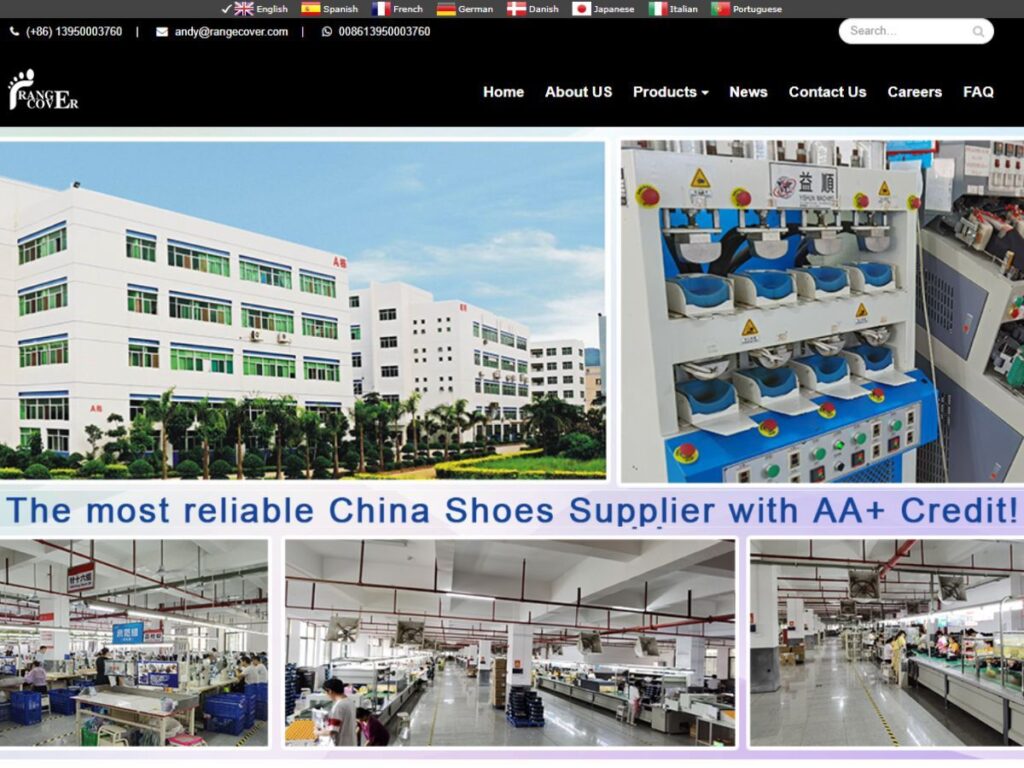
Advantages
- Bulk Purchasing: Retailers can buy large quantities at discounted prices, which helps them increase profitability and maintain stock availability.
- Market Expansion: Distributors allow brands to reach multiple retailers in different locations, increasing their market presence without direct management. For example, if a brand wants to enter new regional or international markets, distributors can handle logistics and retailer relationships efficiently.
- Efficient Supply Chain: Distributors handle storage, transportation, and delivery, reducing operational stress for both manufacturers and retailers.
- Product Diversity: Wholesale distributors often offer a range of footwear styles and brands, allowing retailers to stock a variety of products for their customers.
5. Direct-to-Consumer (DTC)
The Direct-to-Consumer (DTC) model allows footwear brands to connect directly with their customers, bypassing traditional retailers or distributors. This strategy gives businesses greater control over their operations and customer experience.
Examples
- Allbirds: Known for eco-friendly footwear, Allbirds uses its DTC platform to educate customers about sustainability and offer exclusive designs.
- Rothy’s: A DTC brand specializing in stylish, sustainable footwear that focuses on direct customer engagement through its online store.
- Vans: While sold in retail stores, Vans also operates a thriving DTC channel offering exclusive designs and direct marketing campaigns.
- Greats: A luxury sneaker brand that sells exclusively through its DTC channels, offering premium products without traditional retail markups.

Advantages
- Increased Profit Margins: By cutting out intermediaries, brands retain more revenue and offer competitive pricing to their customers.
- Stronger Customer Relationships: Selling directly allows brands to interact with customers, understand their preferences, and provide tailored services.
- Exclusive Offers: Brands can provide limited-edition or customized products that are only available through their direct channels.
6. Third-Party Marketplaces
Third-party marketplaces have become a popular option for footwear distribution, allowing brands to list their products on established platforms. These marketplaces offer access to millions of potential customers worldwide.
Examples
- Shopee: Popular in Southeast Asia, Shopee provides a convenient platform for footwear brands to reach a growing online shopping market.
- Alibaba: Focused on bulk sales, Alibaba connects footwear brands with wholesalers and retailers on an international scale.
- Etsy: Ideal for niche or handmade footwear, Etsy provides smaller brands with a platform to showcase their unique creations.
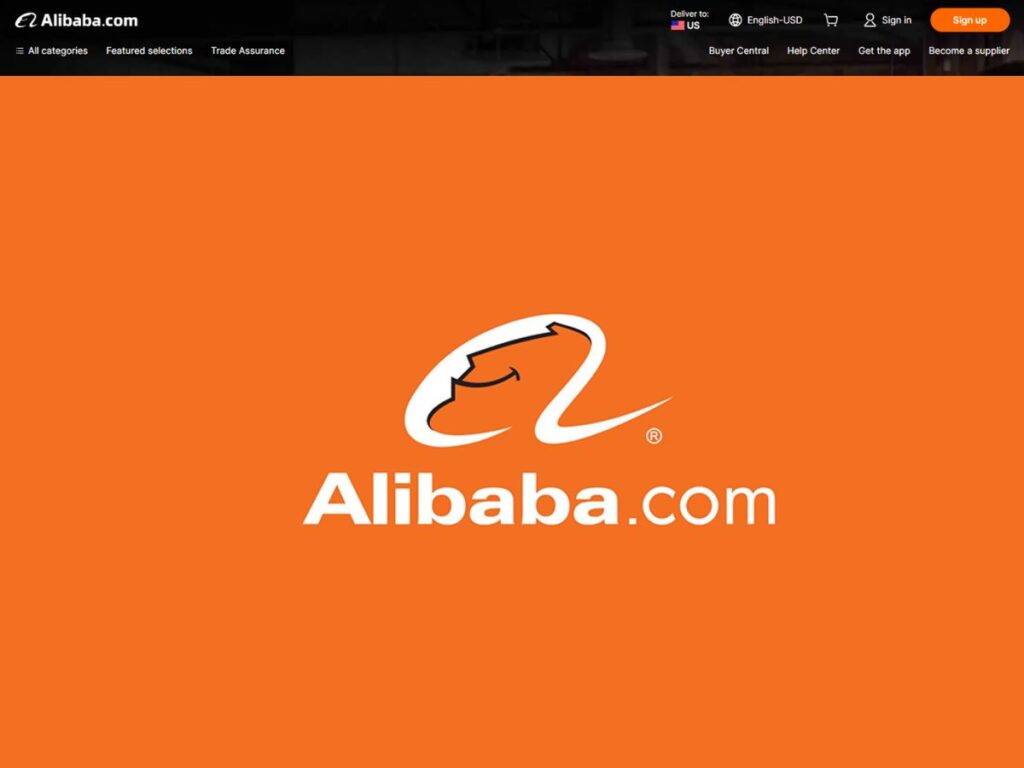
Advantages
- Wide Reach:Third-party marketplaces connect brands with a vast customer base across different regions, increasing visibility.
- Low Entry Barriers: Brands can start selling with minimal setup, as the marketplaces handle technical and logistical aspects.
- Built-In Traffic: Marketplaces attract millions of shoppers daily, reducing the need for heavy marketing efforts by individual brands.
7. Specialty Stores
Specialty stores focus on specific types of footwear, catering to niche markets and unique customer preferences. These stores provide a curated shopping experience, offering products tailored to a specific audience.
Examples
- Running Shoe Stores: Stores like Fleet Feet specialize in athletic footwear, offering professional guidance to runners and athletes for the best fit and performance.
- Designer Boutiques: High-end stores like Jimmy Choo boutiques offer luxury footwear collections, appealing to customers seeking exclusive, fashion-forward designs.
- Orthopedic Shoe Stores: These stores cater to customers with medical needs, providing supportive and therapeutic footwear tailored for comfort and health.
- Kids’ Shoe Stores: Shops like Stride Rite focus exclusively on children’s footwear, offering durable and stylish options for young customers.
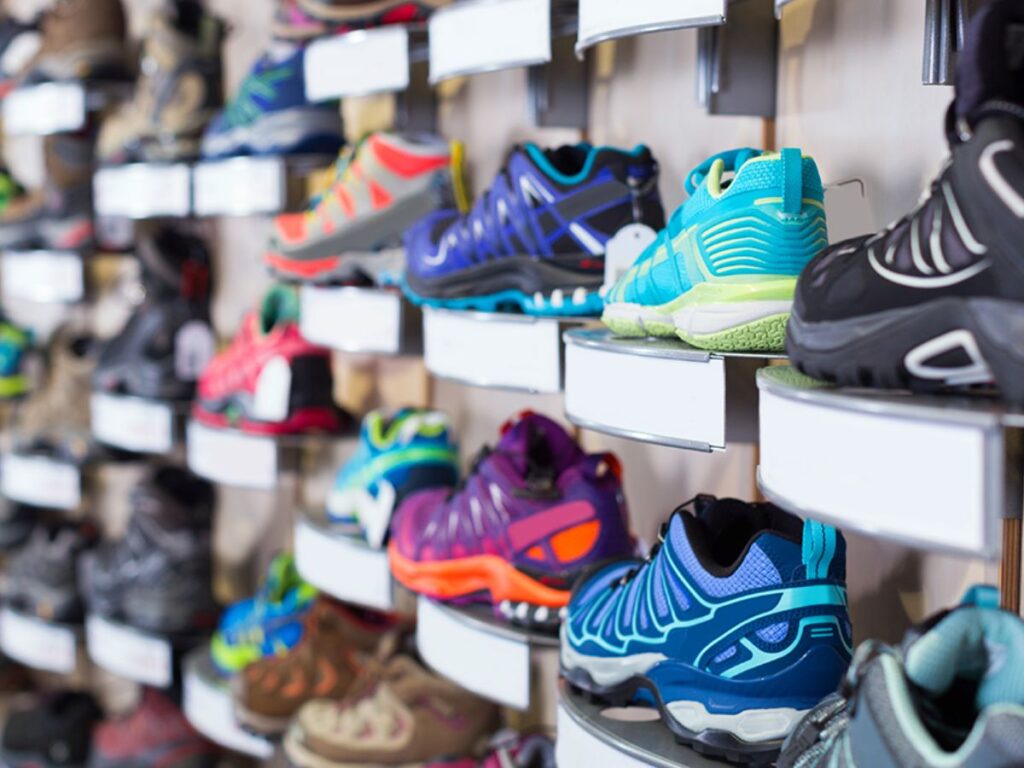
Advantages
- Niche Expertise: Specialty stores often have knowledgeable staff who provide expert advice, making it easier for customers to find the perfect product.
- Tailored Collections: These stores focus on a specific segment, offering a carefully curated selection that meets the unique needs of their target audience.
- Personalized Service: Customers receive more attention and customized recommendations, creating a better overall shopping experience.
8. Pop-Up Shops
Pop-up shops are temporary retail spaces that allow footwear brands to create buzz and reach customers in unique locations. They provide a creative way to test markets and showcase exclusive products.
Examples
- Seasonal Pop-Ups: Many brands use temporary shops during peak shopping seasons, such as holiday pop-ups offering limited-edition footwear.
- Event-Based Pop-Ups: Event festivals are great events for brands to connect with their target audiences. For example, brands set up pop-ups to engage attendees and showcase their styles through interactive experiences and exclusive merchandise.
- Collaboration Pop-Ups: Partnering with other brands, pop-ups like those by Adidas and Gucci offer exclusive collections to attract loyal fans and new customers.
- Traveling Pop-Ups: Mobile pop-up shops in trucks or trailers bring footwear collections to various locations, creating convenience and excitement.
Advantages
- Brand Visibility: Pop-up shops attract attention and generate buzz, helping brands reach new audiences and build excitement around their products.
- Low Overhead Costs: Compared to permanent stores, pop-up shops are more affordable, requiring less commitment and financial investment.
- Testing New Markets: Brands can experiment with new locations and audiences to assess demand before establishing a permanent presence.
9. Discount Retailers
Discount retailers provide affordable footwear options, appealing to price-conscious customers looking for deals. These retailers play a significant role in moving excess inventory and reaching a broader audience.
Examples
- TJ Maxx: This store offers discounted footwear from various brands, making it a popular choice for shoppers seeking high-quality shoes at reduced prices.
- Ross Dress for Less: Known for its budget-friendly selection, Ross provides footwear from different categories, catering to a wide range of customer needs.
- DSW (Designer Shoe Warehouse): DSW combines discounted prices with a large selection of brand-name footwear, appealing to both budget and style-conscious shoppers.
- Outlet Stores: Many brands, like Nike and Adidas, use outlet stores to sell overstock or past-season footwear at lower prices.
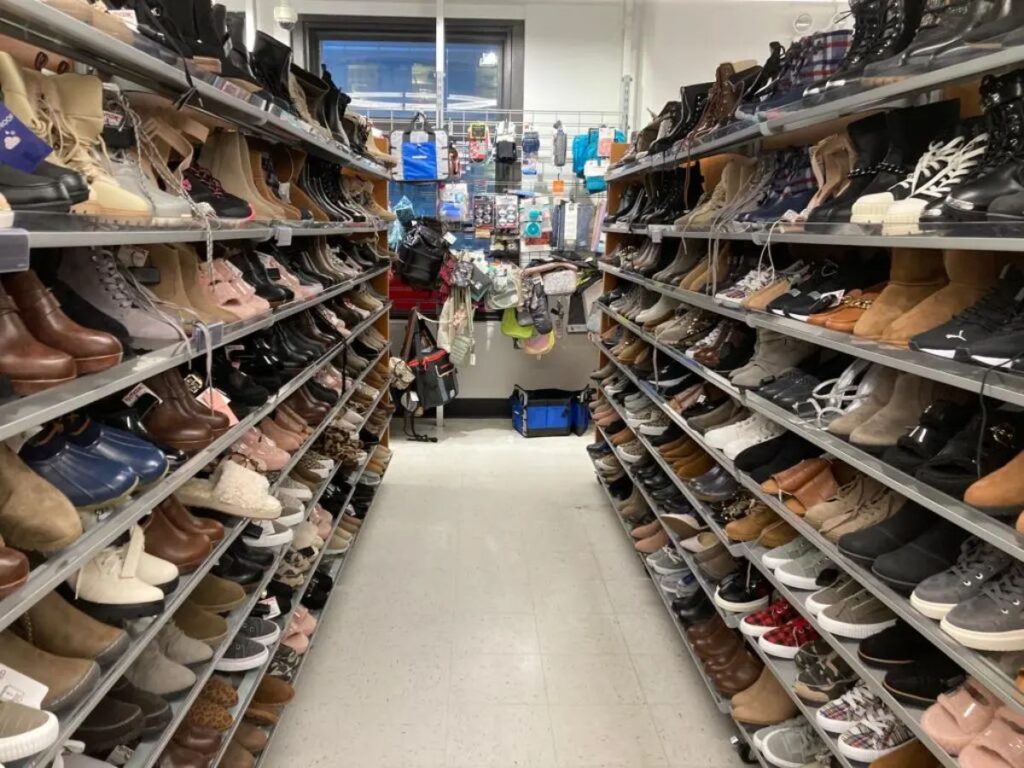
Advantages
- Affordability: Discount retailers attract customers by offering lower prices, making branded footwear accessible to a larger audience.
- Inventory Management: These retailers help brands sell excess or past-season stock, reducing waste and freeing up space for new products.
- Quick Sales Turnaround: By offering lower prices, these retailers help move products faster, which benefits brands looking to clear inventory quickly.
10. B2B Sales Channels
B2B sales channels involve selling footwear directly to other businesses, such as wholesalers, retailers, or corporate clients. These channels allow brands to reach larger audiences through business partnerships.
Examples
- Wholesalers: Footwear manufacturers like XDS distribute products in bulk to retailers, helping expand market reach and simplify logistics.
- Corporate Clients: Businesses like hotels or uniform providers purchase footwear in bulk for their employees, creating a consistent demand for specific styles.
- Trade Shows: Events like the MICAM footwear show provide a space for brands to meet retailers and negotiate large-scale sales deals.
Advantages
- Long-Term Partnerships: Building relationships with retailers or corporate clients often results in repeat business and consistent revenue streams.
- Streamlined Distribution: Partnering with wholesalers or distributors simplifies logistics, allowing brands to focus on manufacturing and marketing.
- Low Marketing Costs: Since B2B sales involve fewer but larger transactions, brands can save on individual customer acquisition expenses.
11. Subscription Services
Subscription services have gained popularity in the footwear industry by offering customers convenience and customization. These services allow brands to deliver curated footwear collections to subscribers on a recurring basis.
Examples
- ShoeDazzle: This subscription service provides personalized footwear recommendations and delivers trendy shoes to customers monthly based on their style preferences.
- ThreadBeast: Aimed at streetwear enthusiasts, ThreadBeast includes footwear in its curated subscription boxes, targeting younger, fashion-conscious subscribers.
- Nike Adventure Club: Nike’s subscription program offers shoes for kids, allowing parents to replace outgrown footwear on a flexible schedule.
- RunLocker: A service for runners, RunLocker includes performance footwear and related accessories in monthly subscription boxes to keep athletes ready for their next run.
Advantages
- Brand Engagement: Subscription services keep customers engaged with the brand through regular deliveries, strengthening their connection and brand recall.
- Predictable Demand: Provide brands with predictable customer numbers, helping to streamline operations and resource allocation.
- Flexibility for Growth: Subscription services can easily scale as customer demand grows, providing an adaptable model for businesses.
Conclusion
Choosing the right footwear manufacturer can feel overwhelming, especially when high MOQs create obstacles for smaller businesses. At XDS, we make things easier with flexible small production lines and a minimum order of 500 pairs for some styles. We are committed to supporting new customers with lower MOQs and maintain frequent quality inspections to deliver excellent products every time.
We hope this guide has provided helpful insights into the top footwear distribution channels and how they can benefit your business. By partnering with XDS, you can enjoy flexible production, reliable quality, and tailored solutions that suit your needs. Contact us today to explore how we can help take your footwear business to the next level!
Explore More Helpful Resources
If you’re looking for more insights, we’ve put together a list of helpful articles that you might enjoy:
Still haven’t found what you’re looking for? Don’t hesitate to contact us; we’re available around the clock to assist you.
Quick Quote
Fill out the form, get the quote in hours!
